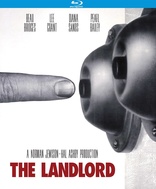The Landlord Blu-ray Movie
HomeThe Landlord Blu-ray Movie 
Kino Lorber | 1970 | 112 min | Rated R | May 14, 2019Movie rating
6.8 | / 10 |
Blu-ray rating
| Users | 4.0 | |
| Reviewer | 4.0 | |
| Overall | 4.0 |
Overview
The Landlord (1970)
At the age of twenty-nine, Elgar Enders "runs away" from home. This running away consists of buying a building in a black ghetto in the Park Slope section of Brooklyn. Initially his intention is to evict the black tenants and convert it into a posh flat. But Elgar is not one to be bound by yesterday's urges, and soon he has other thoughts on his mind. He's grown fond of the black tenants and maybe has even fallen in love.
Starring: Beau Bridges, Lee Grant, Diana Sands, Pearl Bailey, Walter BrookeDirector: Hal Ashby
| Drama | Uncertain |
| Romance | Uncertain |
| Comedy | Uncertain |
Specifications
Video
Video codec: MPEG-4 AVC
Video resolution: 1080p
Aspect ratio: 1.85:1
Original aspect ratio: 1.85:1
Audio
English: DTS-HD Master Audio 2.0 Mono (48kHz, 16-bit)
Subtitles
English SDH
Discs
Blu-ray Disc
Single disc (1 BD)
Playback
Region A (locked)
Review
Rating summary
| Movie | 4.0 | |
| Video | 3.5 | |
| Audio | 3.5 | |
| Extras | 3.0 | |
| Overall | 4.0 |
The Landlord Blu-ray Movie Review
Reviewed by Dr. Stephen Larson September 2, 2019The late great director Hal Ashby got his start in Hollywood as an editor on British director Tony Richardson's The Loved One (1965). That same year, Ashby began a fruitful collaboration with director Norman Jewison as editor on The Cincinnati Kid. After the two worked together again on The Russians Are Coming! The Russians Are Coming! (1966), their partnership reached a creative zenith on In the Heat of the Night (1967), which earned Ashby an Oscar for his editing and the Best Picture award for the Jewison-directed drama about racial strife in a Southern town. In 1970, Ashby was approached about producing and directing an adaptation of Kristin Hunter's 1966 novel, The Landlord. As Jewison recollects in a wonderful new interview on this Kino Lorber Blu-ray (worth the price of the disc alone), he was also offered an opportunity to direct Fiddler on the Roof in Yugoslavia so he bequeathed the directing reins to his apprentice Ashby but stayed on as a producer.
Not unlike In the Heat of the Night, The Landlord is also concerned with racial tensions and class divisions between blacks and whites, only this time the action is set in a run-down tenement in Brooklyn. Elgar Enders (Beau Bridges) is the blonde-haired and blue-eyed 29-year-old son of Mrs. Enders (Lee Grant, in an Oscar-nominated role), a vivacious but supercilious socialite who runs a plantation-like country house with black servants on the northern coast of Long Island. Elgar is itching to do something with his life and use his family's wealth so he decides to invest in a development located in the Brooklyn ghetto. He becomes the landlord but has little idea what's he getting himself into. Upon entering the dilapidated building, he's greeted by tenant Marge (Pearl Bailey), who confronts him with a double-barrelled shotgun for his alleged trespassing. On the street, Elgar also encounters Walter Gee (Doug Grant), a precious yet mischievous kid, and takes him home to his mother Fanny (Diana Sands), who accuses him of molesting her son. The mild-mannered Elgar isn't prejudiced like his mom and soon becomes acclimated to his new milieu. Fanny accepts Elgar's explanation for taking her kid home and the two are smitten. That doesn't sit well with Fanny's temperamental husband Copee (Louis Gossett Jr., then credited as Lou Gossett), who makes two physical threats to Elgar. If being a paramour isn't enough, Elgar also has a relationship with Lanie (Marki Bey), a mulatto art student. The forward-thinking Elgar's interracial relationships clash well with Mrs. Enders's homogeneous and conservative values.
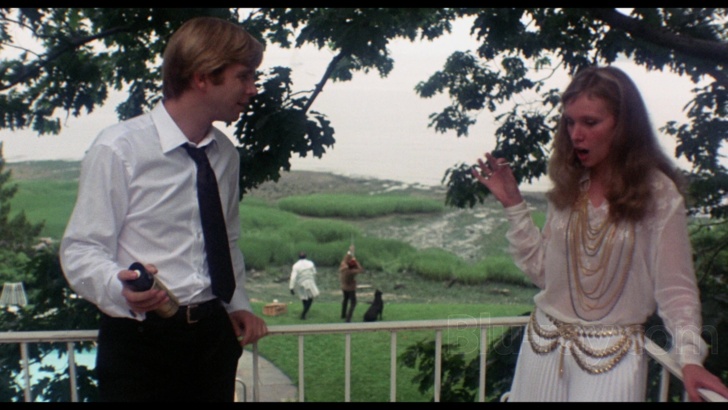
While watching The Landlord, the viewer takes notice of Ashby's editing background. The cutting has a rhapsodic rhythm in which one moment the camera fixates on Elgar's face and the next it depicts what he's thinking about in a flashback. The jump cuts and abrupt cutaways remind me of La Nouvelle Vague and gives the film a raw energy it needs. Master cinematographer Gordon Willis, filming his third feature, sometimes composes abstract, poetic images that seem distended from their time and place.
The movie is very self-aware of the era's racial politics as well as in cinema (Mrs. Enders recounts taking her son to see Guess Who's Coming to Dinner). Looking at it again today, the film doesn't have the same sense of urgency or freshness that it did for 1970 audiences since the themes feel dated. However, Bill Gunn's fine screenplay and Ashby's sense of realism make it a cultural marker that few films during its period were able to replicate.
The Landlord Blu-ray Movie, Video Quality 
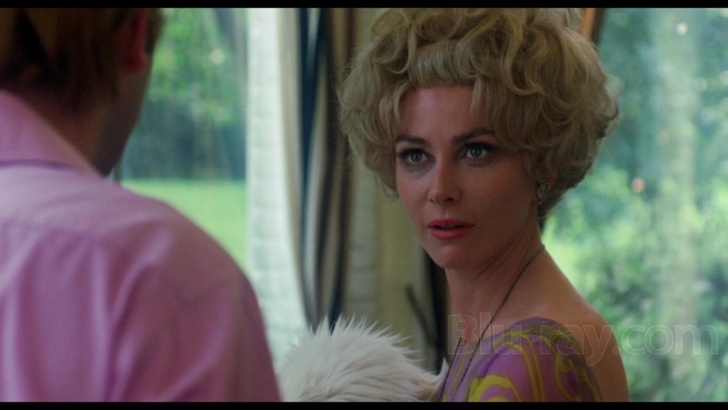
I've been wanting to see Ashby's directorial debut ever since MGM released it MOD way back in 2010. I held back on getting the DVD-R in hopes for a better edition, which we now have on this BD-50 courtesy of KL's Studio Classics' line. The MPEG-4 AVC-enocded transfer appears in the film's native 1.85:1 and looks rock-solid except for a few persistent issues. The image is flat but delivers crisp and deep black levels. The grain structure is inconsistent, though. For example, for the scene where Marge aims the shotgun at Elgar (Screenshot #17) the grain is more coarse than it is for other compositions that use dim lighting. My video score would be higher were it not for the small white specks that often sully the print.
According to United Artist's production notes, The Landlord was shot mainly in the New York metropolitan area. Ashby and his crew worked in the Park Slope section of Brooklyn and a church in Bed-Stuy. When production moved to Manhattan, the crew inhabited Trude Heller's Village discotheque, the squash courts of the Downtown Athletic Club, Cooper Union and its museum, and the grand ballroom of the Hilton Hotel. As the home of the Enders, Ashby selected a lavish country estate on Long Island's North Shore. Critics who saw The Landlord in 1970 noted the contrast in hues that Ashby and Willis drew between the blacks' living quarters and the Enders' estate. Willis, who earned the nickname "Prince of Darkness" for his use of chiaroscuro, films the Brooklyn tenement's hallways and interiors with harsh light. The rural scenes in Long Island are suffused with artificial brightness. George Anderson of the Pittsburgh Post Gazette commented that the farcical scenes of the hero's wealthy family on their posh estate "are among the film's funniest, and they are often captured in over-exposed photography which gives a pastel, unreal loveliness to their activity."
Kino has encoded the main feature with an average video bitrate of 31944 kbps. The 113-minute feature has been given eight chapter markers.
The Landlord Blu-ray Movie, Audio Quality 
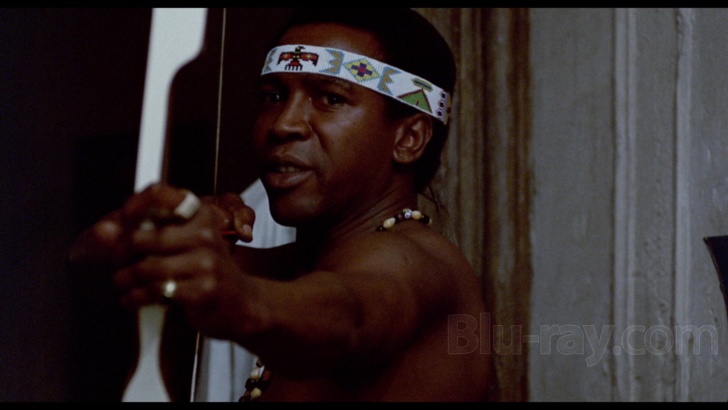
Kino Lorber supplies a DTS-HD Master Audio Dual Mono (1557 kbps, 16-bit) that is authentic to the movie's original monaural mix. The sound is rather flat as one would expect from a fairly low-budgeted UA feature from the early '70s. Dialogue is usually intelligible although I had to turn the volume up from time to time. I noticed some hiss but fortunately, it didn't go on for sustained intervals. Composer Al Kooper was known for his Pop Rock at the time he scored the film and he infuses the sound track with some upbeat tunes that show the greatest fluctuations in pitch than any other sound element.
Optional English SDH are available either through Kino's menu or via remote activation.
The Landlord Blu-ray Movie, Special Features and Extras 
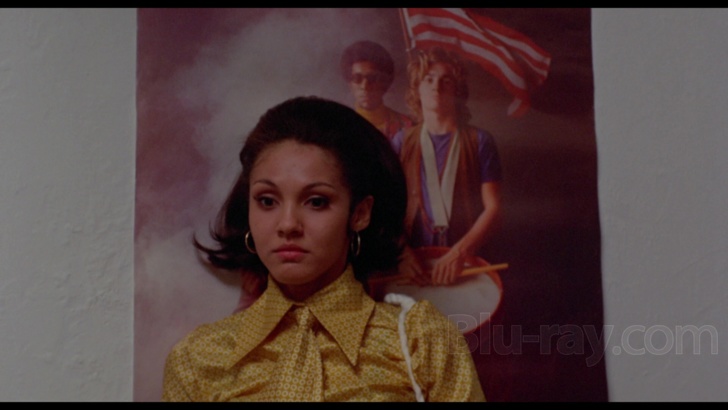
- NEW Beau Bridges: The Racial Gap (25:01, 1080p) - Bridges speaks about how he got started in movies as a child actor and the comeback he made in the late '60s, which eventually led to The Landlord. He also talks affectionately about his friendship with Ashby. In English, not subtitled.
- NEW Reflections: Lee Grant (25:53, 1080p) - Grant discusses her career high points (including getting on the famed TV series Peyton Place) and the social causes that Jewison and Ashby championed; how they represented them on film; and the legacy of The Landlord. In English, not subtitled.
- NEW Norman Jewison and Hal Ashby: Style and Substance (28:58, 1080p) - Producer Norman Jewison takes the viewer chronologically through his working relationship with director Hal Ashby. He also shares many personal anecdotes. In English, not subtitled.
- Theatrical Trailer (2:32, 1080p) - official trailer for The Landlord, which isn't on the MGM disc or the R2 Studio Canal PAL DVD.
- Bonus Trailers - vintage trailers for Coming Home (2:03) and Where's Poppa (2:55).
The Landlord Blu-ray Movie, Overall Score and Recommendation 
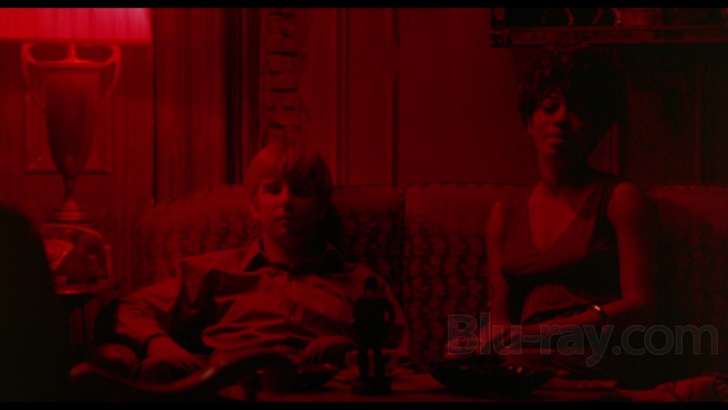
The Landlord is a very good debut by a maverick filmmaker that's been given an above-average package by Kino. The transfer is mostly clean with alternating vibrant colors and darker hues. I wish that Kino could have done more to remove the small blemishes. Lossless audio is acceptable but the disc is really worth owning due to three highly informative new interviews conducted with Norman Jewison, Beau Bridges, and Lee Grant. If you're a fan of Ashby and the two leads, I STRONGLY RECOMMEND a purchase if you can get it less than $25.
Similar titles
Similar titles you might also like

Amira & Sam
2015

If Beale Street Could Talk
2018

The Farewell
2019

An Unmarried Woman
1978

Crooklyn
1994

Shampoo
1975

Tiny Furniture
2010

20th Century Women
2016

Will Success Spoil Rock Hunter?
Limited Edition to 3000
1957

Boxcar Bertha
1972

Hi, Mom!
1970

Do the Right Thing 4K
1989

Chilly Scenes of Winter
1979

Hannah and Her Sisters
The Woody Allen Collection
1986

Sunday Bloody Sunday
1971

The Apartment 4K
1960

Mississippi Masala
1991

From the Terrace
Limited Edition to 3000
1960

Age of Consent
1969

Red Hook Summer
2012
